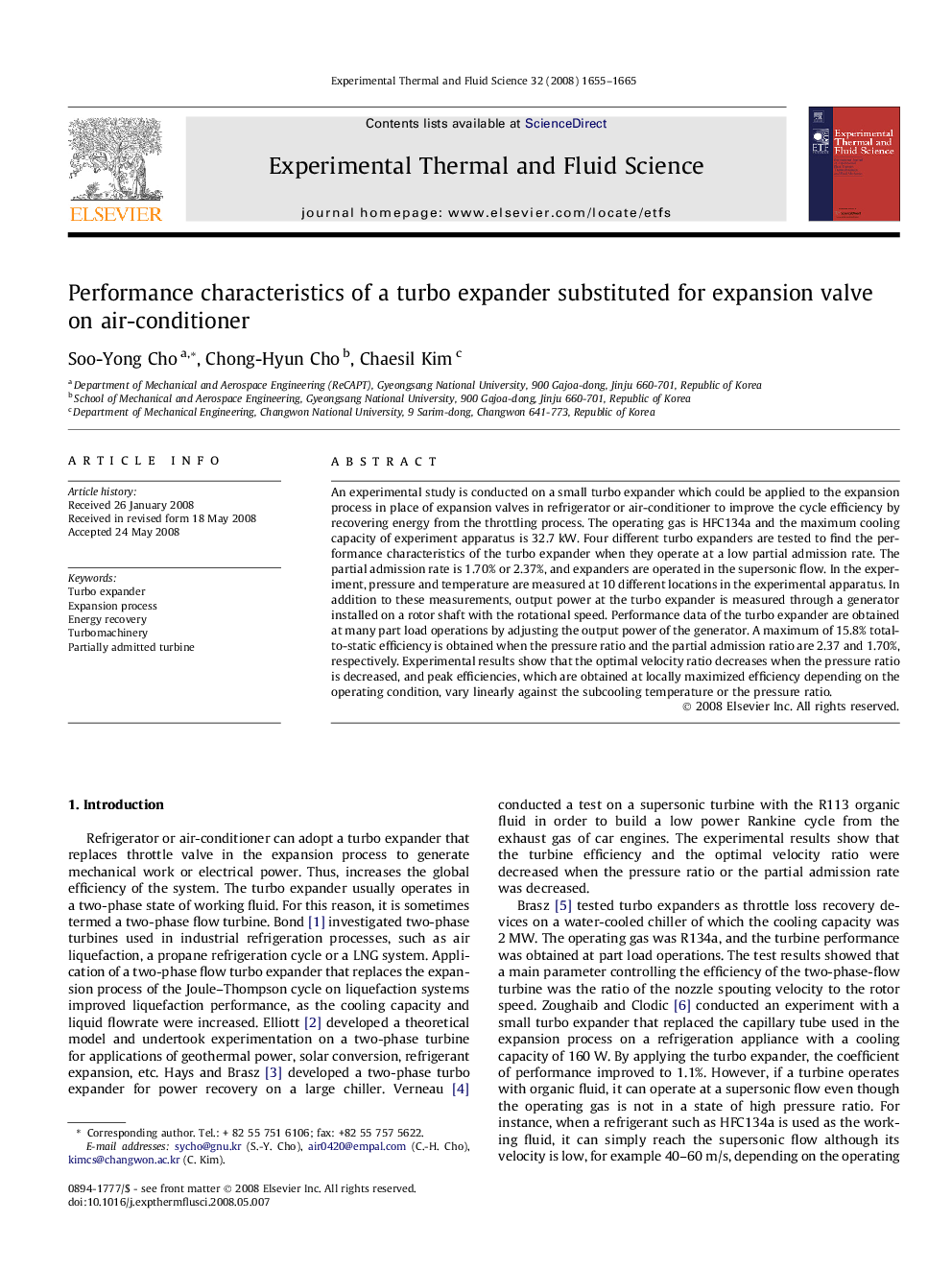| Article ID | Journal | Published Year | Pages | File Type |
|---|---|---|---|---|
| 652234 | Experimental Thermal and Fluid Science | 2008 | 11 Pages |
Abstract
An experimental study is conducted on a small turbo expander which could be applied to the expansion process in place of expansion valves in refrigerator or air-conditioner to improve the cycle efficiency by recovering energy from the throttling process. The operating gas is HFC134a and the maximum cooling capacity of experiment apparatus is 32.7Â kW. Four different turbo expanders are tested to find the performance characteristics of the turbo expander when they operate at a low partial admission rate. The partial admission rate is 1.70% or 2.37, and expanders are operated in the supersonic flow. In the experiment, pressure and temperature are measured at 10 different locations in the experimental apparatus. In addition to these measurements, output power at the turbo expander is measured through a generator installed on a rotor shaft with the rotational speed. Performance data of the turbo expander are obtained at many part load operations by adjusting the output power of the generator. A maximum of 15.8% total-to-static efficiency is obtained when the pressure ratio and the partial admission ratio are 2.37 and 1.70%, respectively. Experimental results show that the optimal velocity ratio decreases when the pressure ratio is decreased, and peak efficiencies, which are obtained at locally maximized efficiency depending on the operating condition, vary linearly against the subcooling temperature or the pressure ratio.
Related Topics
Physical Sciences and Engineering
Chemical Engineering
Fluid Flow and Transfer Processes
Authors
Soo-Yong Cho, Chong-Hyun Cho, Chaesil Kim,
